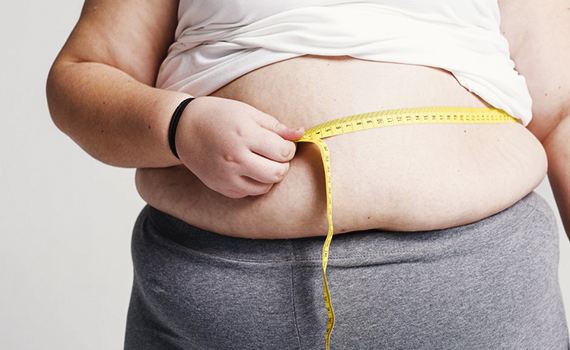
Obesity and weight management
Obesity is a disorder where excessive body fat accumulates in the body. Fat tissues deposit around thighs, hips, waist, breast,chin and in internal organs too. Usually one can observe obesity by seeing their skin folds where excessive fat tissue has been gathered. Obesity can be calculated by BMI. BMI is body mass index. To calculate BMI there is a formula: Weight in kilogram divided by height in meter square.
- *Normal BMI is between 18.5-24.9.
- *BMI more than 30 is considered as obesity.
- *BMI between 25-29.9 comes under overweight category.
Causes of obesity
The main causative factors behind obesity are as follows :
- Genetics
- Sedentary lifestyle
- Poor eating habits
- Hormonal problems as hypothyroidism, polycystic ovarian syndrome etc.
- Mental and psychological disorders as depression etc. can also lead to weight gain.
- Other diseases as cushing syndrome, idiopathic nephrotic syndrome etc. which may cause weight gain
- Some medications as steroids, anti depressants, birth control pills etc. can also promote weight gain.
Ayurvedic perspective of Obesity
The main causative factors behind obesity are as follows :
- In today’s modernized environment obesity can be a cause of embarrassment for many people. However ayurveda has explained about obesity centuries ago.
- According to ayurvedic text books obesity and over weight can be corelated to Medo Rog and Ati stholya.
- In renowned ayurvedic text book Charak Samhita’s 21st chapter (Ashto nindtiya adhyaya) of Sutra Sthan there is a description about eight types of unacceptable body constitutions and obesity is one of them.
- There are seven types of body tissues or Dhatu- Rasa or Body fluids as plasma and lymph , Rakta or Blood, Mamsa or Muscles, Meda or Fat, Asthi or Bones, Majja or Bone marrow and Shukra or Reproductive tissue. As per ayurveda our food nourishes Rasa Dhatu which in turn nourishes Rakta Dhatu, Rakta Dhatu nourishes Mamsa dhatu and so on. So one dhatu or tissue nourishes the next dhatu or tissue.
- In obesity problem occurs at Meda or fat tissue level. In obese person only fat tissue or Medo dhatu gets produced and rest of the tissues can not get proper nourishment.
- Pathophysiology according to ayurveda: Increased fat tissue causes obstruction in channels or Srotas and cease the air or Vata, this ceased air in turn increases the digestive fire or Jathar agni.
- This increased digestive fire causes repetitive urge to have food in obese person as a result obese persons feel hungry most of the time and eat more food. As a result more fat tissue is produced in the body and due to obesity, tissues next to Medo dhatu or Fat tissue do not get proper nourishment, so fatty tissues start getting accumulating in body.
According to ayurveda complications of obesity are:
- *Other tissues do not get proper nourishment, hence longevity of life is affected.
- *Obese people have restrictive activity due to overweight and they have lack of energy.
- *Obese people face difficulty while doing intercourse and their fertility is also affected.
- *Obese people experience excessive sweating and due to excessive sweating they have bad body odour.
- *In obesity other body tissues can not get enough nourishment as a result obese people feel weaker as compared to healthy people and they are unable to do excessive physical activities as exercise.
Complications of Obesity
Obesity in itself is a major health issue and it can lead to other health problems as well, some of which are as follows :
- Arthritis
- Infertility
- Stroke
- Sleep apnea
- Type 2 diabetes
- Hypertension or high blood pressure
- Cardiovascular or heart diseases
- Hyperlipidemia or high cholesterol level
- Liver and gallbladder problems
Management of Obesity
Ayurveda follows a comprehensive approach to treat obesity. With the help of ayurveda you can shed that extra kgs. Follow the below mentioned steps to get back your normal body shape again.
- Improve your eating habits. Get a diet chart from your ayurveda physician according to your body constitution.
- Do physical activities like walk, yoga and exercise regularly. You can learn some easy yoga postures to burn extra calories. Initially you will face difficulty in doing yoga and exercise due to excessive weight but with practice, soon you will be able to do it.
- Do meditation and breathing exercises daily because these will calm your mind and help in counteract with obesity related stress.
- Go for Panchkarma therapy. Panchkarma therapy is very beneficial in reduction of excessive weight without disturbing normal body functions. Panchkarma therapy is a set of five therapies which is mainly designed to remove excessive toxins from body and purify the body.
- **In Physical Therapies a procedure named Rooksha Udvartana or Dry Powder massage is very helpful in obesity. In this procedure massage is done with herbs having dry quality, as a result it helps in burning down fats underneath skin specially in buttocks, thighs and stomach area.
- Take ayurvedic medicines with the advise of your ayurveda practitioner in appropriate amount and in appropriate manner, because everyone has different body composition and they require different herbal treatment as compared to each other.

The name of commonly used herbs and ayurvedic medicines are as follows: Nagar or Ginger (Zingiber officinale), Vidanga (Embelia ribes), Triphala [Ayurvedic herbal formula consisting of three equal parts of Haritaki (Terminalia chebula), Amalaki(Emblica officinalis) and Bibhitaki (Terminalia bellirica)], Turmeric (Curcuma longa), Neem (Azadirachta indica), Guggulu (Commiphora wightii), Trikatu [A herbal combination of three peppers Sonth or ginger (Gingiber officinale), Marich (Piper nigrum), Pippali (Piper longum)]etc.
